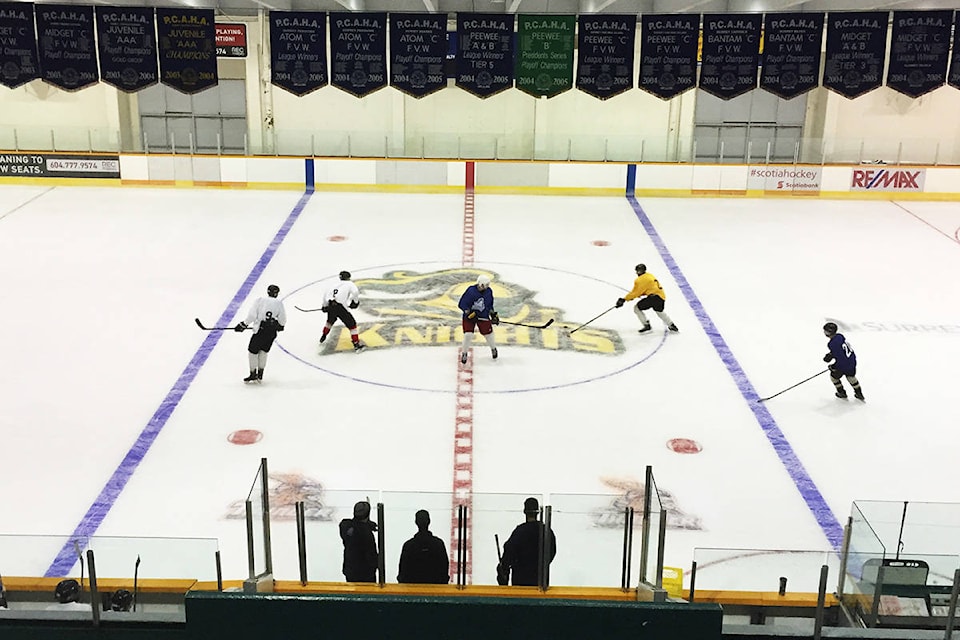SURREY — The ice in all Surrey arenas is made by industry-standard ammonia refrigeration systems similar to the one in Fernie, where three people died following a gas leak Tuesday (Oct. 17).
The new arenas currently being built in Cloverdale and North Surrey will also utilize ammonia refrigeration plants, Chris Gain, arenas manager for the city, told the Now-Leader on Wednesday.
“I don’t know what system Fernie has in its arena, I’ve never been there, but I can tell you Surrey has ammonia refrigeration plants,” said Gain, referring to the city’s eight sheets of ice in five buildings – North Surrey, South Surrey, Newton, Cloverdale and and the Sport and Leisure complex in Fleeetwood.
• RELATED: Here’s a first look at Surrey’s two new arenas, from June 2017.
“Ammonia is generally thought of as the best refrigerant, and that’s why the majority of arenas use ammonia,” Gain explained.
“The plan is currently to be moving forward with the same sort of systems (for Surrey’s new arenas), more improved and even more state-of-the-art than we currently have,” he added.
In Fernie on Tuesday, emergency crews were called to the arena after reports of an ammonia leak in the building. As they arrived on scene they discovered a citizen administering CPR to an individual, and two more victims were discovered.
• READ MORE: Fernie mourns after fatal ammonia leak, from Oct. 18.
Gain said arena refrigeration is, generally speaking, “a very regulated and safe operation and field,” and that he believes Surrey “has a very safe operation.”
The city has “a number of protocols, systems, in place to ensure that we safeguard public and staff,” he said.
“We are always looking to improve, and if there’s anything we can learn from Fernie, we will absolutely look at that. Safety is a huge priority for us, for the public and staff, and if there’s anything we can learn to do better, then we will absolutely look at it.”
According to WorkSafeBC, ammonia is a toxic chemical most commonly found in refrigerants, cleaning products and fertilizers. It can be a liquid or a gas, and it’s most dangerous as a gas. Exposure to a high concentration of ammonia can be fatal.
• READ MORE: VIDEO: Three workers identified as victims of Fernie ammonia leak.
Gain shed light on how ammonia-based refrigeration systems work at Surrey’s arenas.
“There’s two systems in place,” he said. “There’s the ammonia or refrigeration system and then it sort of overlaps with a brine system, and the ammonia just cools the brine and the brine goes under the ice and that’s what sucks the heat out of the slab. So the ammonia is restricted to basically back of house – there’s no ammonia going underneath the rink slabs. The refrigeration plant is basically where the ammonia is contained.”
When system repairs are necessary, Gain said only certified staff go to work.
”We’re often doing repairs, minor repairs, but there is a lot of protocols in place, so I guess the first thing to note is we have certified staff,” he said. “There are requirements through the BC Safety Authority, who’s our regulating body, to have certified staff, and we actually go above and beyond what is technically required.… They all have orientation and training, but as far as actual physical things, like interventions, all of our systems are monitored, at stations – off-site ones, remote, like a home-alarm monitoring system. We also have sensors throughout the buildings.”
